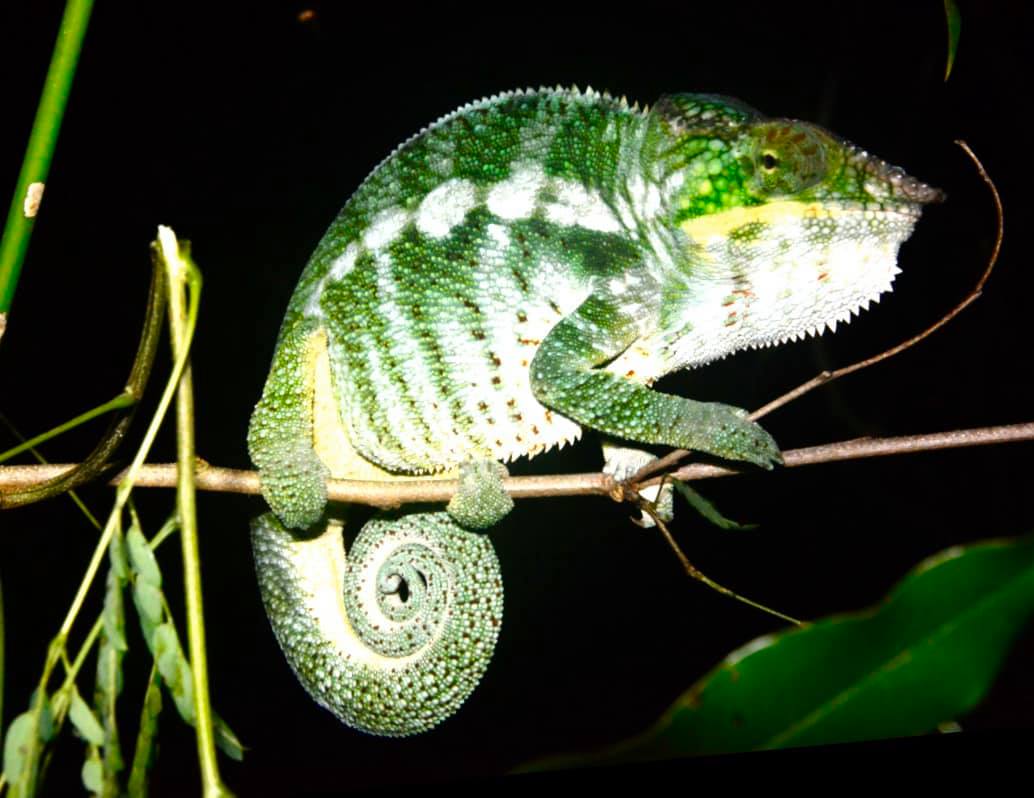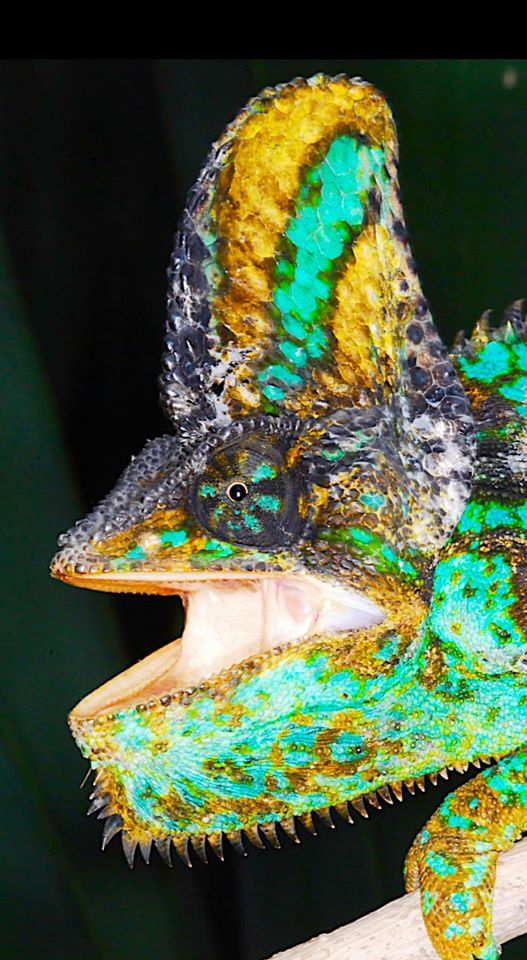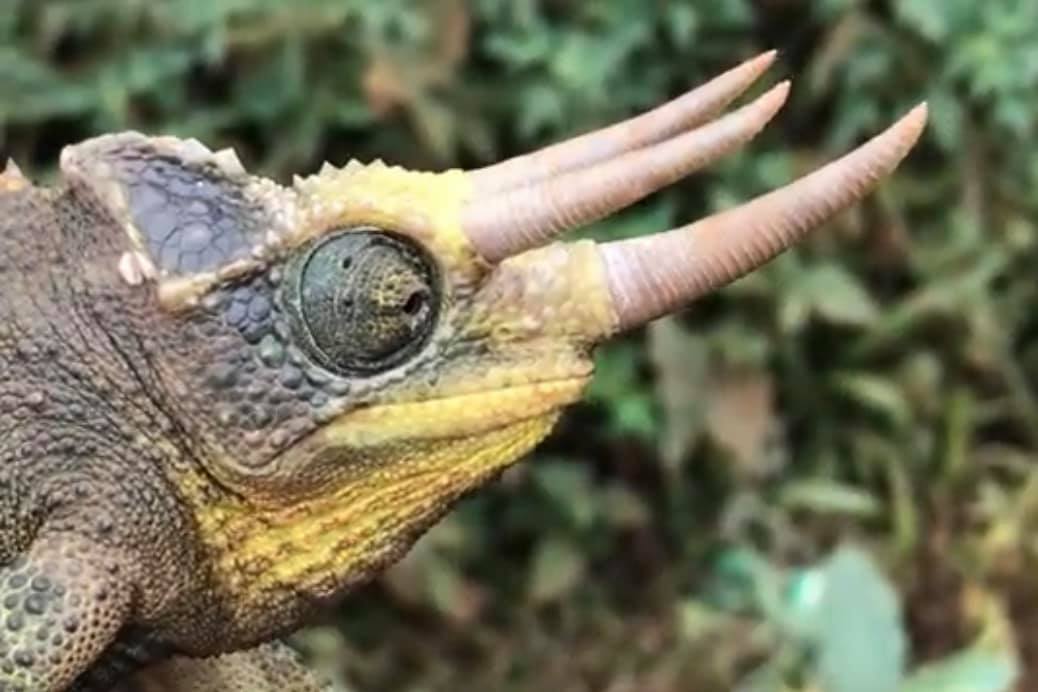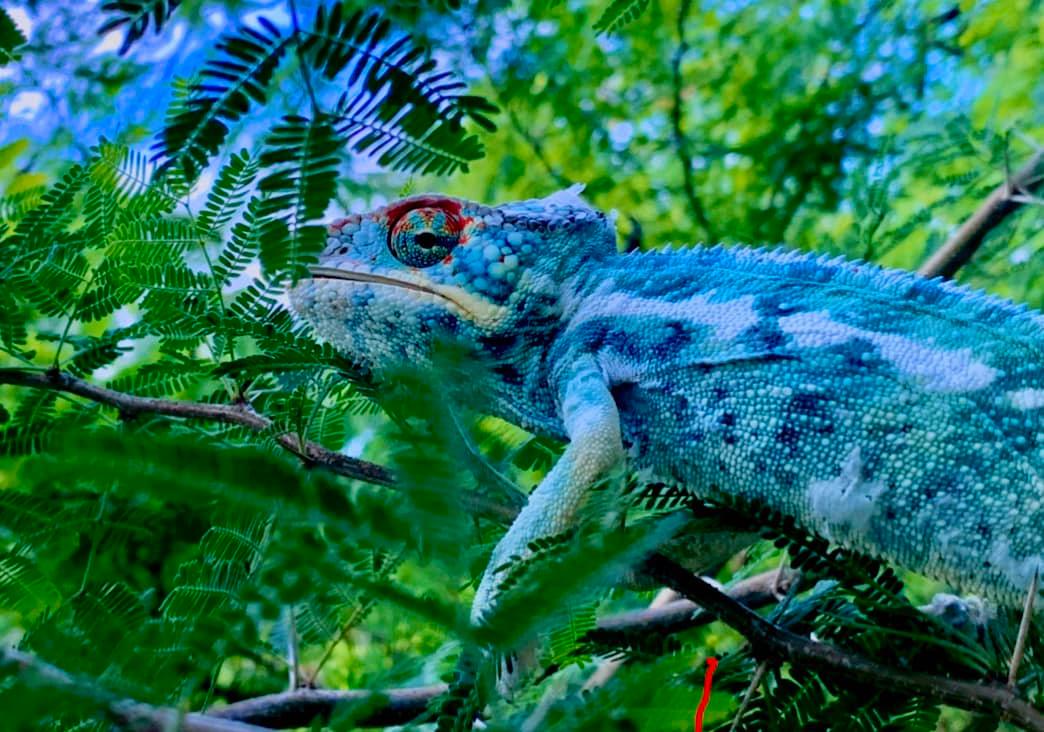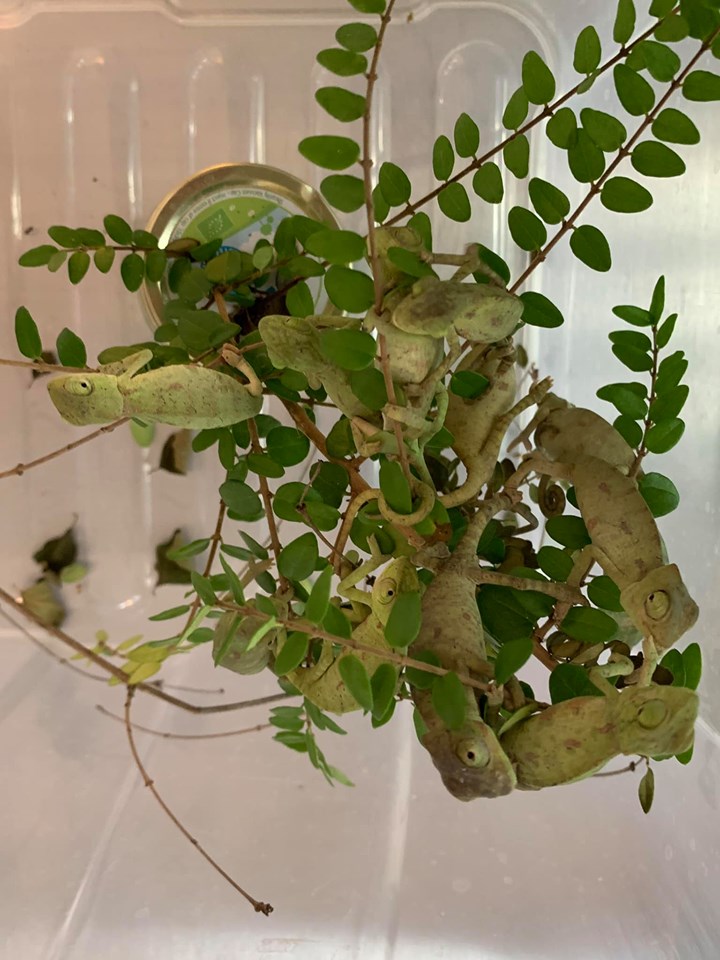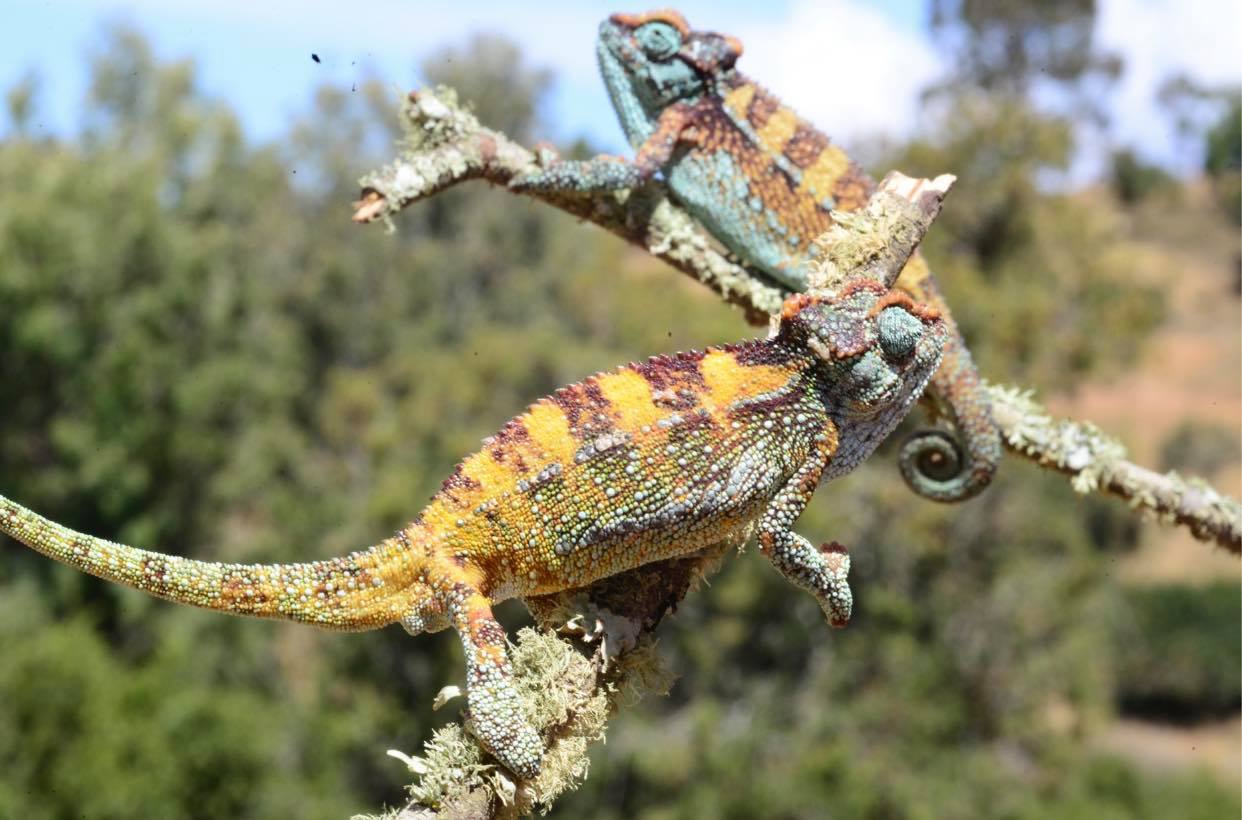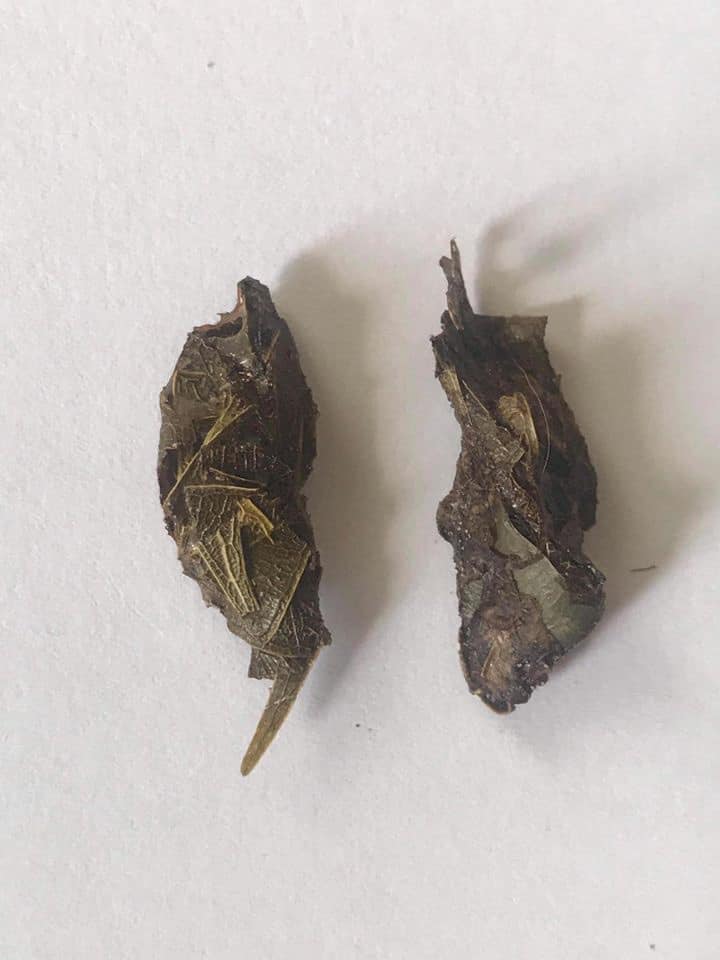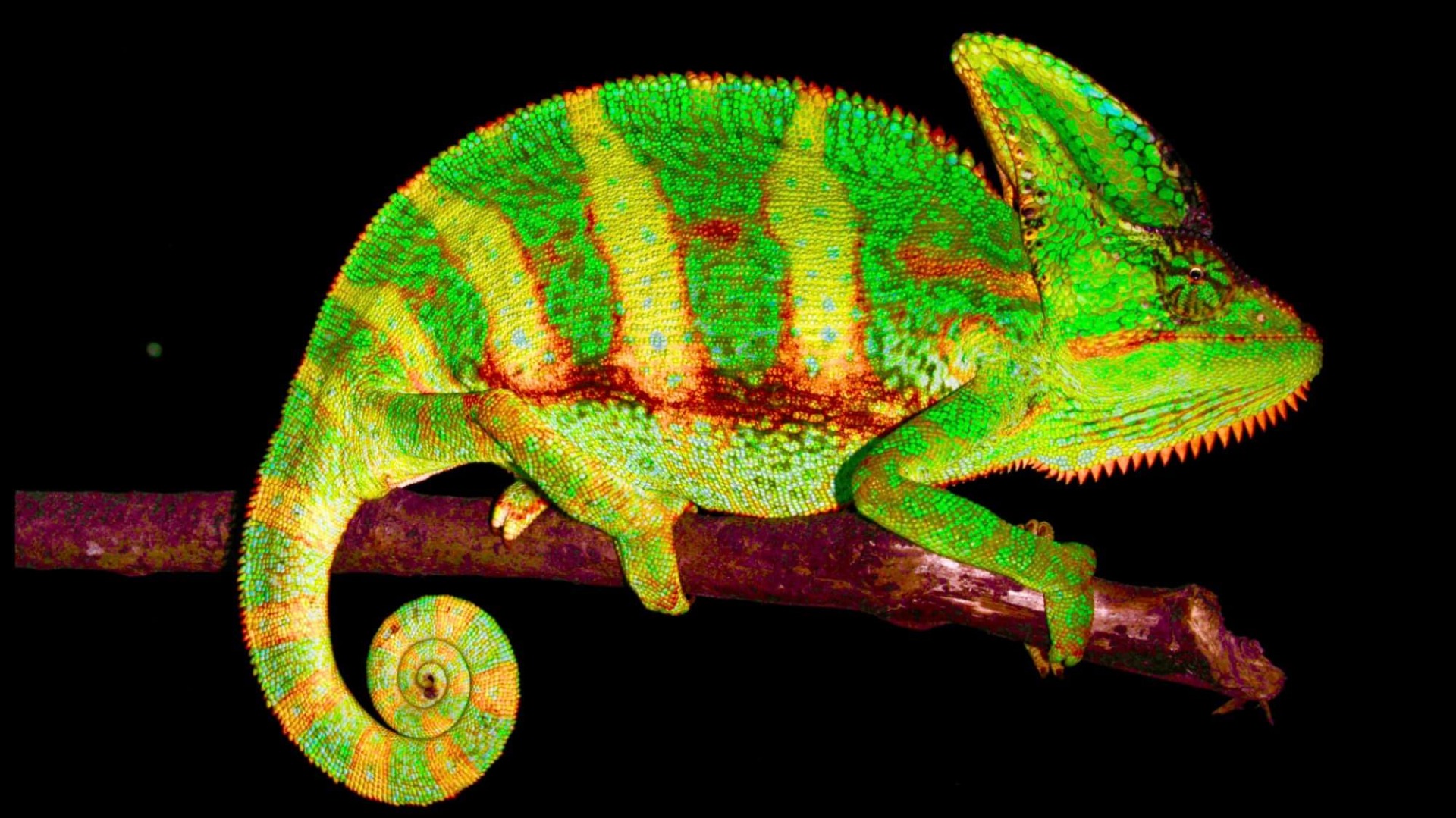A new study analyzed the karyotypes of six Furcifer species and finds chromosomal variability among the species, with diploid (2n) chromosomal counts of 22-28 and distinct Z and W sex chromosomes with female heterogamety in all species, however four species expressed multiple neo-sex chromosomes.
CHAMELEONOLOGY:
Chameleon Life History...
A new study presents a detailed examination of the best preserved chameleon fossil skull known, using micro-CT scans, geometric morphometrics and phylogenetic methods. An early Miocene fossil from Rusinga Island (early Miocene, Lake Victoria, Kenya), is assigned to genus Calumma, opening a wide field for interpretation of the origin of chameleons...
Color Change Myth Unleashed
Chameleons do NOT use their ability of active color change to "blend" with their environment
Fog In Ambanja...
Well, YES, itnis just not as visible as in the mountains. Check the pic in the morning made from Ankify island around 7AM and the second from Nosy Komba at 9AM...
REAL NOSY KOMBA Panther Chameleons...
A population confined to a tiny, round, volcanic island, called also Nosy Ambariovato (approx 3miles across only), separated from Nosy Be and Ankify by few miles narrow straits, is small and unique...
Chameleons Lick Branches
When exposed to new environment, chameleons sometimes lick off branches.
Very often, people are mistaken to consider Yemen chameleons to be inhabitants of desert regions with hot and dry climate.
Meet the Jackson's Three-Horned Chameleon
The most popular and frequent subspecies kept in captivity is T.j.xantholophus, originating from the eastern foothils if Mt Kenya in Kenya.
Dehydration And Eyes...
It is a common. Belief, that heavily dehydrated chameleons have eyes sunken in the eyeholes.
The desired "true blue" color in Nosy Be is highly valued and many breeders claim they have a breeding lineage of it...
Guide To The Forms Of Trioceros Jacksonii
By Petr Necas & Bill Strand, May 2018
Do Chameleons Get Fat In The Wild?
The answer is YES, though it is a very rare occurrence. As a rule, chameleons DO NOT get fat.
Furcifer pardalis aka panther chameleon is a complex of forms of different level of mutual relationship. Some are genetically very close and represent jusg local populations, some are distinct at a level of different subspecies or even species.
The variability is well expressed in the color palettes of adult males when "fired up": the local forms...
An important issue, almost ignored in the chameleon husbandry is the question of the direction of the light.
The Truth About UVI Unleashed
Only few topics in Chamaeleoculture are so controversial such as the debates about UV. During my most recent expeditions to Africa and Arabia (incl. Socotra), I made many observations and measurements...
Pair Bonding In Chameleons
Chameleons do not tend to build permanent pairs. First, they mostly live too shortly so that it lack sense. Second, they tend to disperse in the environment homogeneously to utilize the natural resources.
Water is an essential chemical substance, life is dependent from. Water builds a substantial part of the lizard bodies (63-81%) and as such, the mechanisms keeping the most voluminous substance of their bodies in balance is vital for them.
Chamaeleo Calyptratus Biotopes
A lot of confusion is spread over the cyberspace about where and how the Veiled chameleons live in fact. Even some quite reputable pages and sources are usually very inaccurate...
RUN-RUN-RUN
When young chameleon hatch or are born, a miracle happens...They often show an obsessive tendency to restlessly run for several hours...
Myth(s):1. People believe, the high or massive part of the head behind the orbits are used for storage of water to keep a reserve for periods with water limited or absent availability.
2. You can hear even stories like this (exact citation of an anonymous facebook member): "The way I see them put water up in their caskets...
Parietal Eye: The Mystery Of The Third Eye
The parietal eye, also known as a third eye or pineal eye, is a part of the epithalamus present in some animal species. The eye is photoreceptive with a wide spectrum of sensed wave lengths reaching from IR to UV and is associated with the pineal gland, regulating circadian and seasonal rhythmicity and hormone production for thermoregulation.
Proximity In Chameleons And Its Implication To Captivity Based On Wild And Captive Observations
Chameleons are often called solitary.Absolute nonsense.They are animals with deep sense of "community" approach, they are highly social! They have complex mechanisms of intraspecific communication, they have their territorial behavior, they have rituals and modes and patterns etc etc.
Salt Crystals Around Nostrils
Often, people ask questions about the white crystals around the nostrils...What are the myths and what is true?
Eggs And Their Story
Millions of years the mother Nature finetuned the process and in case of panthers, taught the females to lay their eggs in shallow, 5-7cm only deep holes in half shade and half sun, in light sandy soil. The eggs were incubated all together, exposed to diapause, circadian and seasonal temperature fluctuations little rain from time to time, bigger...
The primary reason often cited of increasing water intake through eating leaves (and other plant material) is doubtful, because the massive eating leaves happens in the rainy season, when there is enough rain water to drink. So, it makes no sense for them to eat leaves if they are anyway richly hydrated...In the dry season it is pointless to...
The Miracle Of Sperm Storage: Amphigonia retardata. How long the females can store sperm?
For chameleon breeders, the question of confirmed father of the offsprings is very important in the breeding projects. The complication is, the females can store sperm from previous matings... So, if you mate same female with more different males, from the moment it mates with the second one, you will never be sure who is the father of the young......
People assume, sibling mating happens often the wildBUTOPPOSITE IS TRUE!The argumentation of lowmobility in chameleons and high number of offsprings ismisleading and happens completely different way than most people assume.
The appearance of male-like females and female-like males (transsexual specimens) is a phenomenon which is quite rare and noone has ever got deeper insight, but it is very likely more frequent nowadays than we think, especially in the widespread captive bred species.




